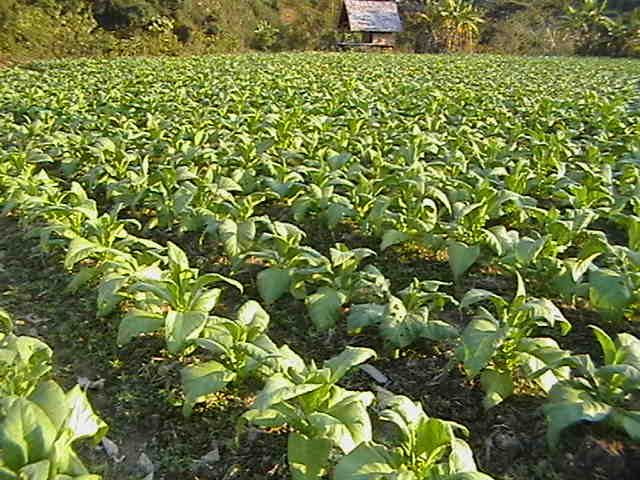In this recent Bloomberg report, we get some insight about the American company, Mapp Pharmaceuticals which makes the Ebola cure, ZMAPP. We also learn that the funding provided for the drug’s development was provided entirely by the United States Government.
The report:
Mapp Biopharmaceutical Inc., the closely held San Diego company whose Ebola drug was used to treat two infected Americans, has a pending application to patent antibodies used to treat that disease as well as cancer, influenza, rheumatoid arthritis and Alzheimer Disease.
According to application 20130149300, published in the database of the U.S. Patent and Trademark Office in June 2013, the antibodies are made from a member of the tobacco family,Nicotiana benthamiana. The U.S. National Library of Medicine of the National Institutes of Health describes this plant as “the most widely used host in plant virology.”
This particular plant is used because it can be genetically transformed and regenerated with good efficiency and is particularly amenable to being infected with a wide range of viruses. Little is known about the origins, genetic variations or ecology of the plant other than its origin in Australia, according to the NIH.
The patent application indicates that the research for this invention was funded by grants from the NIH, the U.S. Department of Defense and the Defense Threat Reduction Agency. In an August 2013 statement, the U.S. Army’s Medical Research Institute of Infectious Diseases said the compound successfully treated primates infected with Ebola.
Presently, a number of claims in the patent have been rejected by the patent office, according to a June 17 communication sent to counsel for Mapp. These rejections are non-final.
The drug is manufactured in Owensboro, Kentucky, by Kentucky Bioprocessing LLC, which was acquired by Reynolds American Inc. on Dec. 31, 2013.
Since October 2001, 44 U.S. patents containing the word “Ebola” in their description have been issued, according to the patent office database. Additionally, there are 5,430 published applications containing the word. Some are related specifically to the disease while others are peripheral, such as application 201401099, which covers a method of continuing students’ education when a “socially distancing event” occurs, such as a natural disaster or pandemic.

